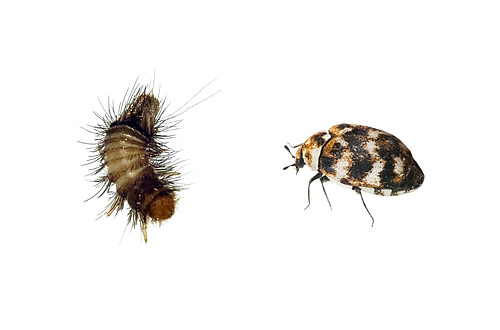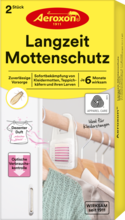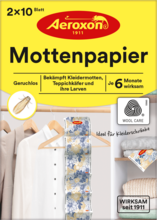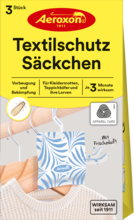
Carpet beetles
Species
Fur beetles (Attagenus pellio), carpet beetles (Anthrenus scrophulariae)
Size
3 to 6 mm
Larvae
Up to 12 mm (fully developed)
Development and reproduction
Up to 20 eggs once a year; development lasts up to one year
Food
Larvae require keratin (e.g. wool, fur) or quinine (e.g. insect collections) for development; adults eat pollen and, above all, white flowers
Damage
Larvae eat clothing, feather and fur
Control measures
Clothes Moth Killer Cassette, Clothes Moth Killer Strip, Clothes Moth Killer Sachet
Detailed description
With approx. 350,000 species in existence, beetles are the most rich order of insects in the world. There are approx. 8,000 species of beetles in Europe. Beetles differ from all other insects because of their front wings which have hard wing covers. They always have biting mouthparts.
Fur beetles and carpet beetles systematically belong to the family of skin beetles (Dermestidae). Both species are common textile and material pests that have spread worldwide through trade.
The carpet beetle is 3 to 4.5 mm long and looks much like a ladybird due to its colouring. The fur beetle measures 3.5 to 6 mm in length and is black. A bright spot is located in the middle of the wing covers.
The larvae, which measure up to 6 to 12 mm in length, are a yellow-brown colour, have long bodies, are typically hairy and also have spiny hairs at the end of their body.
While beetles only live a few weeks as adults, the larvae can take up to a year to develop during which time they go through multiple moulting stages.
Adult beetles eat the pollen of flowers, but especially like white flowers, for example, fruit blossoms, blackthorn, hawthorn or umbel flowers. Beetles infest homes to lay their eggs there.
Damage is caused by the larvae which require proteins from animal origin, for example, keratin made of wool, feathers, furs, etc. in order to develop. Larvae frequently develop in birds’ nests in the outdoors.
Beetles prefer attacking textiles which have been in storage for a long time. That’s why regularly opening and airing out clothes chests is a good preventative measure. An infestation can be reliably prevented by using insecticides in wardrobes.
To successfully combat beetles, it’s important to find and treat the whole infestation. The treatment is done using either moth killing products containing an insecticide evaporating into the air or with insecticide sprays with residual effectiveness. Close attention should, of course, be paid to the instructions.
Recommended Aeroxon products
Immediate extermination of clothes moths, fur beetles and their larvae



